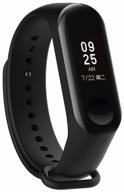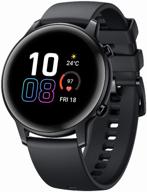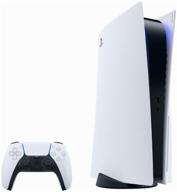
Review on 📸 Powerful and Versatile Canon EOS 70D Digital SLR Camera - Body Only by Eh Pyaw Paw ᠌

The ratio of price and quality is very pleasing, I will repeat the purchase.
In general, a well-assembled device without marketing compromises on the filling. Everything a hobbyist needs is in it. But don't expect a huge improvement in image quality. Compared to the initial DSLRs, the improvement will mainly affect ease of use, functionality and performance, and the video, of course, is at its best. For a pro or just the owner of a modern full-frame camera, it makes sense to look at the 70-ku either because of the rate of fire or because of the video. In short, only because of some highly specialized, but very necessary characteristics. Personally, I was extremely attracted: large viewfinder, working ISO 6400, rate of fire and video. I often shoot indoors in winter: sports training, holidays, etc. With a fast zoom lens at F / 2.8 and a shutter speed of 1/250, even dynamic scenes turn out to be quite decent quality. ISO 12800 is an extreme, 25400 is only in RAW and for printing 10x15, and then after a lot of processing. For the web, it will go with a stretch: when you reduce it to 1200 pixels horizontally, you can still see either noise or details eaten by noise reduction. If you squeeze more, it becomes tolerable. Tested theory about noise reduction when using mRaw and sRaw formats. At high ISOs, the noise does not decrease. On the contrary, the picture is blurred and the details that were in the large RAV are lost. It makes sense to use them only to save space on the flash drive. Moreover, pure RAW writes in a series much faster than mRaw or sRaw, which indicates that the camera uses image recalculation algorithms - a common downsampling, but it also takes time.
- Moved from 600D The main, in my opinion, why it can be chosen: 1. Large viewfinder compared to the 600D (not bright: it is very similar in brightness to the 600-ku; Nikon, by the way, has lighter viewfinders). But only with the 600D and other entry-level DSLRs. The numbers of coverage percentages and increases indicated by manufacturers, to be honest, do not reflect anything. After 70 matches in 600 you look like through a keyhole. And he immediately compared it with 6D . and so, if you need a LARGE viewfinder - you go there, you can see EVERYTHING in it, the viewfinder seems to be 1.5 times larger. Although, we must pay tribute, in the 70-ke it is already possible to aim manually with a shallow depth of field. 2. Functionality - almost everything in terms of shooting that you can dream of. 3. Rate of fire. The buffer is large, but for long series in RAV you still need a fast SD card. 5. Battery capacity compared to the younger model. If you do not use the main screen, you forget about frequent charging. When shooting for yourself enough for 2-3 weeks. 6. Video on STM lenses has become really convenient: tracking, autofocus - quietly, smoothly and accurately. 7. Touch screen is responsive. Macro photography made simple with touch focus. 8. Prog EOS-Remote with Wi-fi. Although you expect more functionality from it. 9. Precise exposure metering. 10. The carcass is more comfortable for an average male hand, with a slight increase in the weight of the device. 11. Nimble built-in SD card controller. The case when throwing off a photo is much faster by connecting the carcass with a wire. Although I used to always use a card reader. 12. Again in this line there is a fine adjustment of the focus of the lenses - you can not depend on the jambs of Sigma and alignment services. The noisiness of the matrix is not much - by a step - but still improved. On older 18-megapixel sensors, black started to turn purple from ISO 6400, and at 12800 it was generally a mess. Here ISO 6400 has become practically working, color reproduction suffers little due to noise, details almost do not disappear, 12800 is tolerable (we are talking about RAW).
- 1. Dust on the mirror and the matrix has become a frequent guest. Previously, I owned only entry-level DSLRs, and I didn’t often encounter such a nuance on them. I suspect the reason is in the large mirror, which is located close to the mount cutoff, as a result of which it constantly catches garbage during lens changes. On younger models, it is smaller and deeper. I had to get acquainted with a pear for cleaning. And after changing the lens, it will not be superfluous to turn off and turn on the camera so that it shakes off the matrix. 2. Trouble for owners of Tamron lenses with a mechanical drive, such as 17-50 f / 2.8. Autofocus in liveview and video is buggy. If you focus manually - no problem. On the machine, it starts to crawl back and forth and after 1-2 seconds the carcass loses contact with the lens. It is treated by turning it off and on. 3. Many complain about the lack of a white balance button (WB). For some reason, Canon thought this was an extremely rarely used feature. The main thing is that it is NOT in the list of those functions that can be reassigned to different buttons! And to access - you need to keep the main screen on. 4. Compatibility with external flashes of third-party brands - Nissin Di622 of the first revision did not work in any mode. Only slave from built-in. 5. The image noise is noticeably higher than that of the direct competitor Nikon D7100, the dynamic range also lags behind. The progress in picture quality is noticeable only when switching from older 18-megapixel models.
New products
Comments (0)
Top products in 📷 Digital Cameras
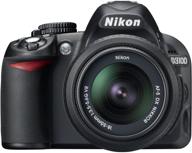
Nikon D3100 DSLR Camera with Auto Focus-S Nikkor Zoom Lens (Discontinued by Manufacturer)

109 Review
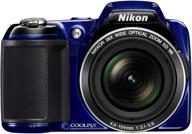
Nikon COOLPIX L810 Digital Camera: 16.1MP, 26x Zoom, NIKKOR ED Glass Lens, 3-inch LCD (Blue)

95 Review

Discontinued Canon EOS 7D Digital SLR 📷 Camera Body Only with 18 MP CMOS Sensor

88 Review

Nikon D3100 DSLR Camera Body (Kit Box) - No Lens Included, International Version with No Warranty

298 Review




